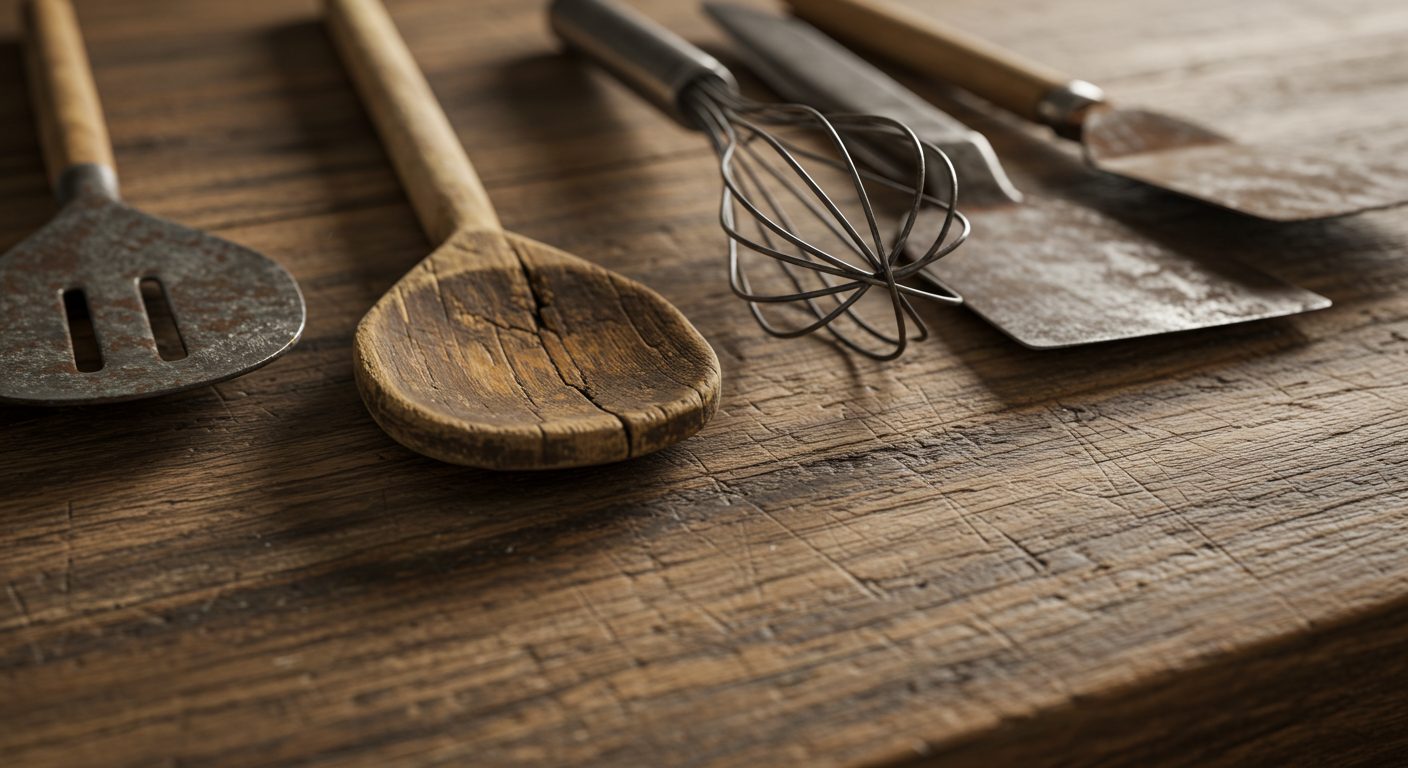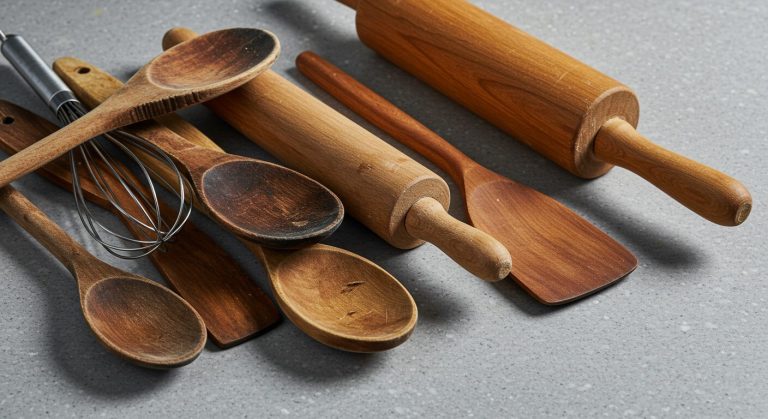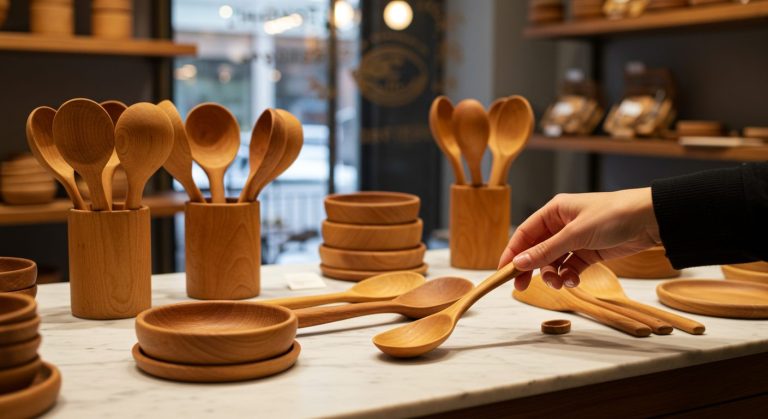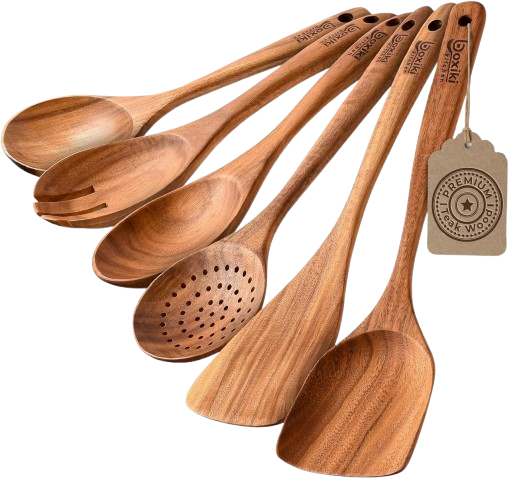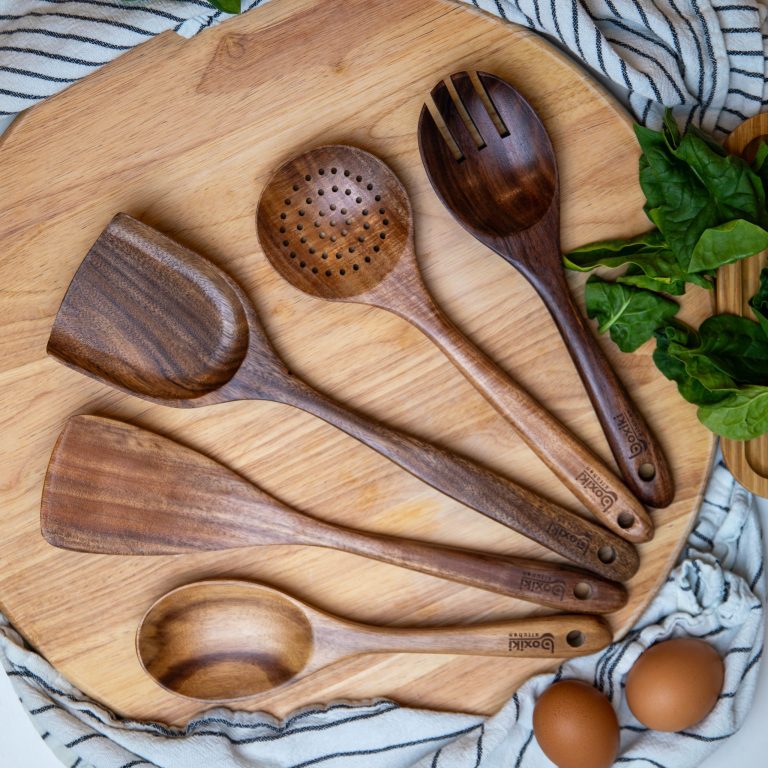🅶🅰🅻🆄🆅
ADVERTORIAL
The Afternoon I Realized My Kitchen Tools Were Failing My Cooking
I thought I was just “being sentimental” about my old utensils — until a single family dinner showed me how much they were holding me back.
By Anna
It was a rainy Sunday, the kind of afternoon that makes you want to slow-cook something rich and comforting. My daughter had set the table, my partner was making fresh bread, and the kitchen smelled like simmering tomato sauce. I reached for my favorite wooden spoon — the one I’d used for years — and as I stirred, I felt it bend, then snap, right in my hand. Sauce splattered onto the stovetop, a streak across my apron, and I froze, staring at the two useless halves.
“It wasn’t just a spoon breaking. It was the moment I realized the tools I trusted had quietly been letting me down.”
I’m Anna, 42, mom of two, full-time high school counselor, and weekend cooking enthusiast. For me, cooking isn’t just about the food — it’s about connection. It’s about the conversation that happens over a pot of soup, the way a child leans on the counter to “help” stir, the satisfaction of a sauce that tastes like home.
That’s why I kept using my old, mismatched utensils — the ones I bought in my twenties when money was tight. They were familiar. Comfortable. But looking at that broken spoon, I realized my loyalty was misplaced. I was compromising the very moments I treasured.
The more I thought about it, the more I noticed the problems. My slotted spoon had a faint curry stain that wouldn’t scrub away. My old spatula smelled faintly like garlic no matter how many times I washed it. One of my “heirloom” spoons had developed a hairline crack that trapped moisture and made me worry about bacteria.
I tried replacing pieces over the years
A cheap bamboo spoon that warped after two dishwasher runs, a “heat-resistant” plastic spatula that melted on the edge of a hot skillet, a metal slotted spoon that left fine scratches in my non-stick pan. It was a revolving door of disappointment.
It turns out I wasn’t alone in my frustration. America’s Test Kitchen reviewed dozens of wooden utensils and found that teak wood ranked among the most durable — resisting cracks, warping, and water damage even under heavy use.
The Spruce Eats explains that unlike metal or plastic, quality wooden utensils won’t scratch non-stick cookware, don’t leach chemicals, and feel comfortable in hand for extended cooking.
And according to the National Hardwood Lumber Association, teak’s natural oils make it exceptionally resistant to moisture, pests, and decay — qualities that keep it beautiful and functional for years without special treatments.
A week later, I visited a small kitchen boutique downtown. The air smelled faintly of coffee from the café next door, and a soft jazz record played in the background. My eye caught a display of warm, honey-brown utensils laid out on a marble counter. Their smooth grain shimmered under the soft lights.
The shop owner noticed me lingering. “Teak wood,” she said, handing me a rounded stirring spoon. It was lighter than I expected, but solid — balanced. I traced the silky surface and imagined stirring a sauce without worrying about splinters, or scratching my pans.
For the first time in a long time, I felt excited about something as simple as a spoon.
That’s how I found the Teak Wood Utensil Set — six carefully crafted pieces: a solid spoon, slotted spork, round stirring spoon, slotted spoon, angled spatula, and scoop spatula.
Each one is made from sustainably sourced teak, meaning no two are exactly alike — the grain patterns are as unique as fingerprints. The natural oils in the wood keep them water-resistant and heat-tolerant, so I can stir, sauté, and serve without worrying about warping or cracking.
The smooth, polished finish means they don’t absorb odors or stains, even after my most colorful curry.
Best of all, the naturally non-stick surface is gentle on my non-stick pans — no more tiny scratches that ruin the coating. The ergonomic handles make them a pleasure to hold, even during a long stir-fry session. I finally had tools that weren’t just functional — they were beautiful enough to display in the crock by my stove.
After bringing them home, I did what any modern cook does — I went online. I found chefs on Instagram swearing by teak for its longevity and natural elegance. One food blogger I follow said she’s been using the same teak utensils for over a decade without a single crack. Even America’s Test Kitchen recommends teak as a top choice for professional and home cooks alike.
“It was reassuring to know I hadn’t just fallen for something ‘pretty’ — I’d invested in tools with a proven reputation.”
What other people said (the social proof I needed)
“Great addition to the kitchen if you’re looking to replace all of your plastic utensils. Clean up easily, look beautiful too.”
Audry : 
Verified Purchase ꪜ
“Love love easily replaced plastic toxic kitchen tools”
Customer: 
Verified Purchase ꪜ
“The wooden utensils are great to use; they don’t get burnt and could leave it in the pot during cooking. They look classic. Easy to handle whilst frying food. Easy to wash even it gets oily.”
Bette Lim: 
Verified Purchase ꪜ
Now, when I cook, I notice the difference in the small moments. The way the angled spatula slips effortlessly under a fillet of salmon without flaking it. How the slotted spork lets me lift pasta from boiling water directly into sauce without drips trailing across the counter.
My youngest likes to “help” by stirring pancake batter with the round spoon — and I don’t wince, wondering if it’ll break in her hands.
They’ve become part of the rhythm of our kitchen, woven into the rituals that matter most. In a way, these utensils have restored something — not just efficiency, but a sense of pride in the tools I use to feed the people I love.
I’ve learned something important: the little things in a kitchen aren’t so little.
They’re the quiet partners in every meal, the invisible thread tying together years of breakfasts, weeknight dinners, and holiday feasts.
Looking back, I wish I’d made the switch sooner. There were too many dinners where I fussed over warped spoons or stained spatulas instead of focusing on the conversation at the table.
But now, when I glance at that crock of teak utensils, I feel ready for anything — from a last-minute soup to a weekend-long cooking project.
If you’ve been cooking with tools that frustrate you, this might be your moment. Because once you’ve felt the smooth weight of a teak spoon in your hand, seen it emerge from the sink as beautiful as the day you bought it, and trusted it through a hundred meals —
You’ll wonder how you ever cooked without it.
🅶🅰🅻🆄🆅
Home / Privacy Policy / TERMS + CONDITIONS / COPYRIGHT @2025 GaLuv. ALL RIGHTS RESERVED
DISCLAIMER: THIS IS AN ADVERTISEMENT AND NOT AN ACTUAL NEWS ARTICLE, BLOG, OR CONSUMER REPORT. The content on this site and the story presented are for promotional purposes only. Any experiences or testimonials featured are illustrative and may not reflect the typical results you achieve with these products. This page may receive compensation for purchases made through links on this site. PRODUCT DISCLOSURE: These utensils are not intended to diagnose, treat, or improve any medical condition. They are designed for everyday kitchen use and enjoyment.
